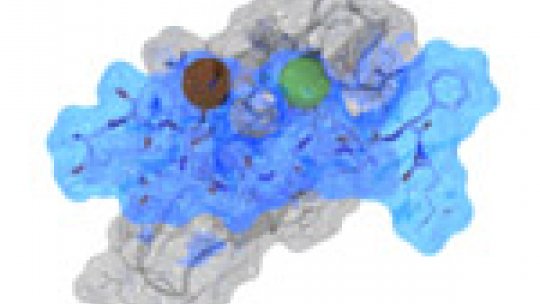Images
Contact

Scientists at Memorial Sloan-Kettering Cancer Center in New York and at IRB Barcelona reveal the mechanism of action of a protein that is essential for life and is associated with disease.
Researchers headed by Joan Massagué at Memorial Sloan-Kettering Cancer Center (MSKCC) in New York and by María Macías at the Institute for Research in Biomedicine (IRB Barcelona) have identified a complex mechanism by which some proteins that are essential for life, called Smads, regulate the activity of genes associated with cancer. The fruit of three years of intense work, the study reports on the life cycle of this protein, a process that ensures that the protein is destroyed when it has completed its function. These results have been published today in the top journal Genes & Development, which has devoted its cover to this research.
In the TGF-beta/Smad signal cascade, the hormones TGF-beta and BMP transmit information to the Smad protein in the cell nucleus in order for this molecule to stop cell division and to ensure that tissues grow in an orderly and coordinated manner. Although the TGF-beta/Smad signalling pathway has been known for over twenty years, until now it was unclear how Smads temporally controlled the activity of such important genes. “We had several pieces of the puzzle but we couldn’t put them together”, says Macías.
A number of earlier studies performed by Massagué’s lab had identified that Smads undergo phosphorylations –a kind of chemical change – in a region of the protein about which little is known. By means of biophysical and biochemical approaches, the researchers have discovered that these modifications occur in a coordinated fashion over time and are not random. “First, phosphorylations make some proteins bind to Smads in order to control the activity of target genes and later other phoshorylations cause protein bindings that lead to the destruction of Smad once this protein has completed its mission. This is the way cells prevent fatal errors”, explains Macías.
Having established the time sequence of these events, the scientists used cell and structural biology approaches –determination of the atom position in Smad proteins and other activating and destructor proteins bound to them– to confirm the results previously found. “We have been able to decipher the specificity of the binding between Smad and other proteins and to reveal the secret code that these proteins use to extract information”.
How do these proteins favour tumour cells? Massagué explains that “these signalling cascades are like the body’s pólice force. The tumour cells, in other words the delinquents, disturb these pathways and use them for their own means to grow and spread”. These pathways normally are involved in basic cell processes but when altered by mutations several diseases can appear such as cancer, congenital conditions, chronic inflammation and emphysema. These results could serve as the foundation on which to develop new clinical treatments against cancer and other diseases.
Reference article:
A Smad action-turnover switch operated by WW domain readers of a phosphoserine code.
Eric Aragón, Nina Goerner, Alexia-Ileana Zaromytidou, Qiaoran Xi, Albert Escobedo, Joan Massagué, and Maria J. Macias.
Genes & Development (2011). [doi: 10.1101/gad.2060811]
About IRB Barcelona
The Institute for Research in Biomedicine (IRB Barcelona) pursues a society free of disease. To this end, it conducts multidisciplinary research of excellence to cure cancer and other diseases linked to ageing. It establishes technology transfer agreements with the pharmaceutical industry and major hospitals to bring research results closer to society, and organises a range of science outreach activities to engage the public in an open dialogue. IRB Barcelona is an international centre that hosts 400 researchers and more than 30 nationalities. Recognised as a Severo Ochoa Centre of Excellence since 2011, IRB Barcelona is a CERCA centre and member of the Barcelona Institute of Science and Technology (BIST).




